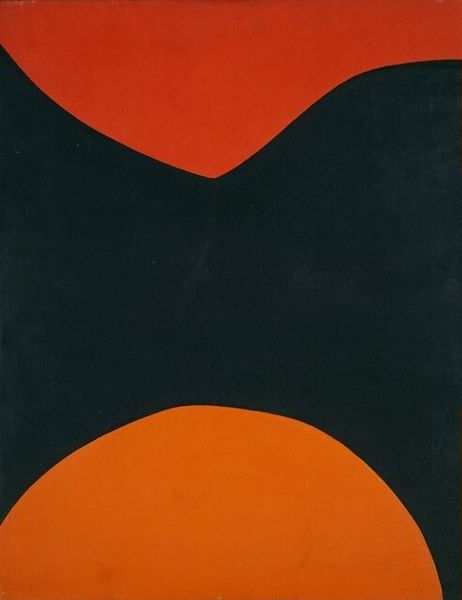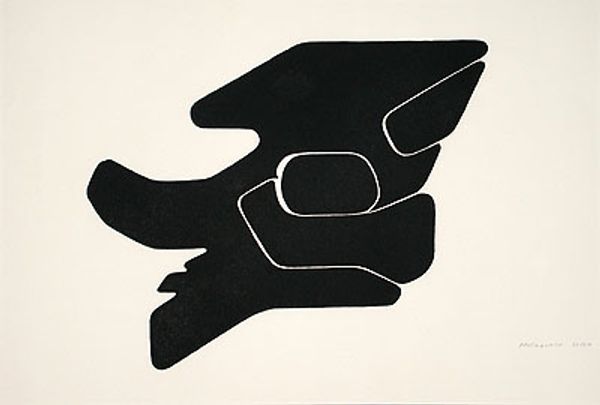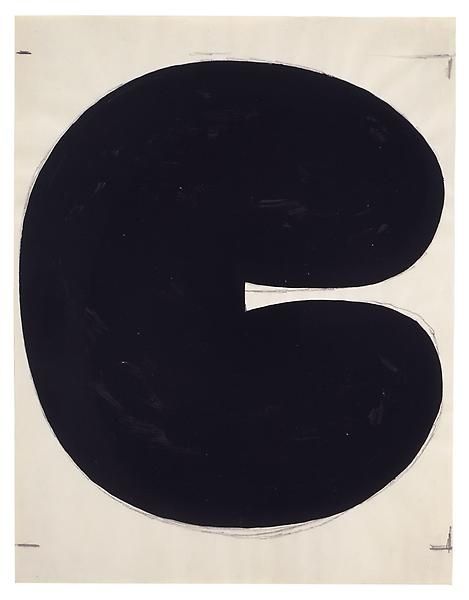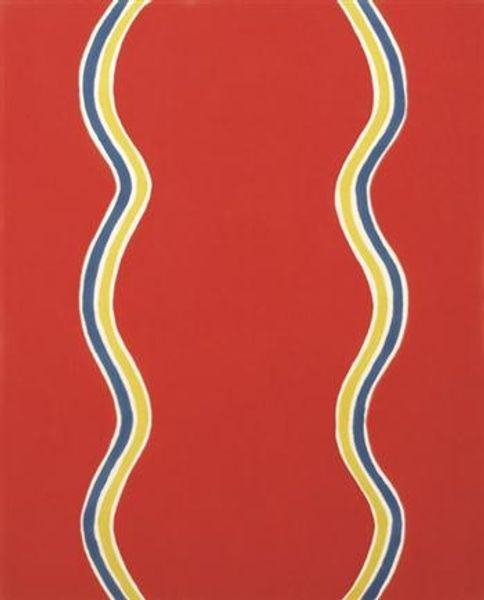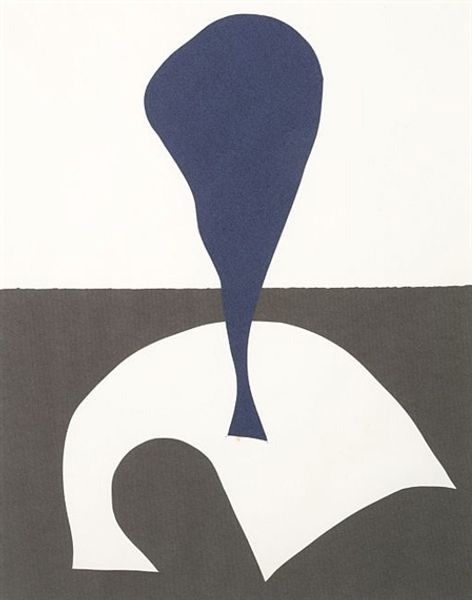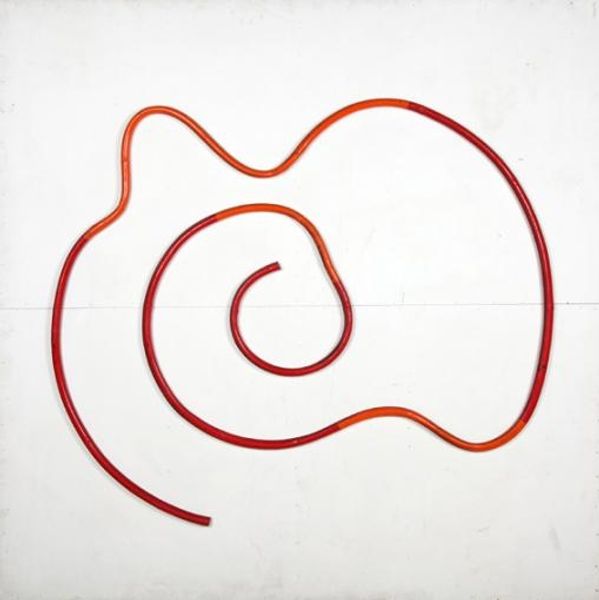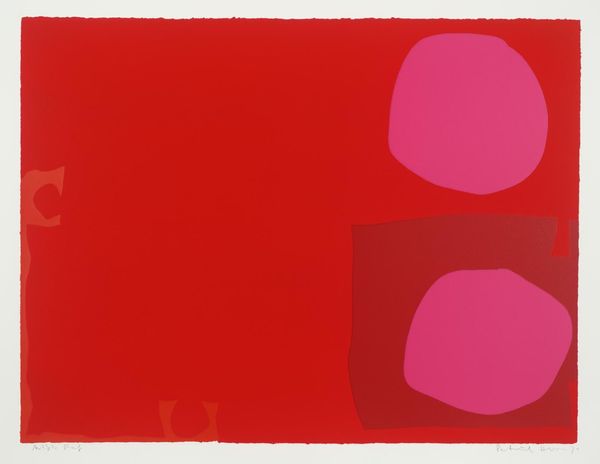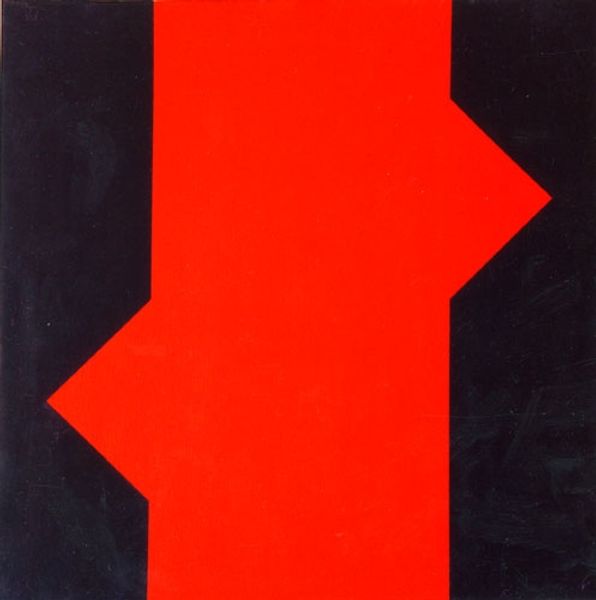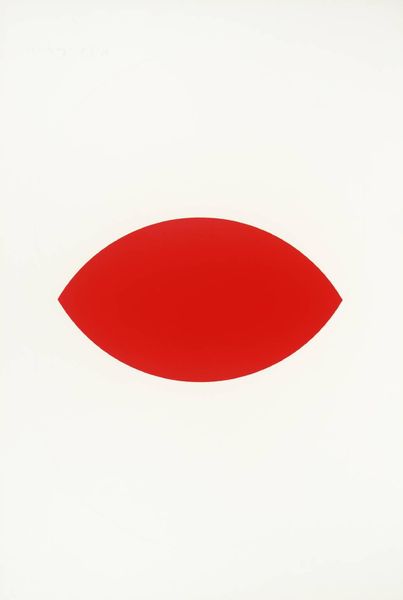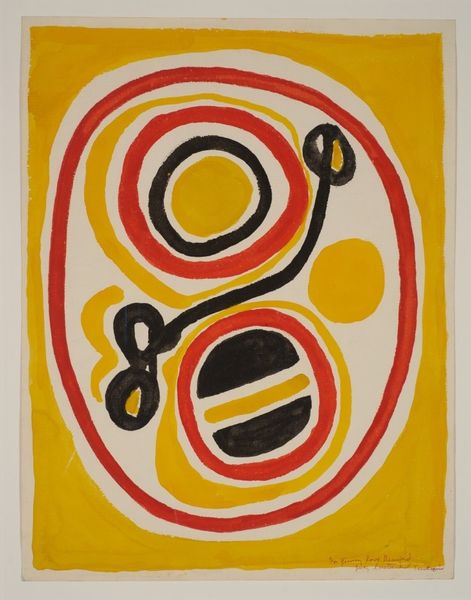
painting, acrylic-paint
#
abstract-expressionism
#
non-objective-art
#
painting
#
op art
#
pop art
#
acrylic-paint
#
geometric-abstraction
#
abstraction
#
modernism
#
gutai
Copyright: Jiro Yoshihara,Fair Use
Editor: This striking untitled painting, by Jiro Yoshihara, is rendered in acrylic paint. The dominant colours are a bold orange against a stark black. I'm immediately drawn to the simplicity, but also the almost visceral quality of the paint application. What aspects stand out to you? Curator: As a materialist, my eye goes straight to the physical properties of the paint itself, and the ways it interacts with the canvas. This piece demonstrates Yoshihara's move away from traditional techniques, favoring the immediacy of acrylics. Think about the mid-century shift in art production. Factories were churning out new materials. This affected the means of artistic creation and reception; labor itself transforms through that lens. Don’t you think? Editor: Definitely. So, the selection of acrylic, rather than oil, is a commentary in itself on this industrial context. It’s fast-drying, easily manufactured... accessible, almost. Curator: Precisely! Acrylic paint freed the artist from some of the constraints of oil, reflecting an increased awareness of materiality, consumerism, and accessibility. But consider also the flat, graphic quality – isn’t there something “designed” about the negative space surrounding the imperfect circle, as though created in a print shop? It isn't simply the hand of the artist on canvas but an echo of industrial labor practices. Editor: I see what you mean! I had been focusing on the hand-painted aspects of it, the small imperfections in the circle. Now that I think about it, it brings the piece back to a place of tension between manufacturing and the artist’s own hand. Curator: Yes. By consciously embracing readily available material, and referencing labor beyond “the artistic” in this painting, Yoshihara highlights his participation in the complex societal dialogue happening in postwar Japan. What do you think about its impact and legacy? Editor: This has given me so much to think about. It really emphasizes how artistic choices are inextricably linked to broader societal changes, something easily overlooked at first glance. Curator: Exactly. Viewing art from a materialist perspective pushes us to examine the artwork, the cultural values, and its socioeconomic contexts— it provides insight far beyond surface appearances.
Comments
No comments
Be the first to comment and join the conversation on the ultimate creative platform.

